Table of contents
Who is the orixá Ewa?

Ewá is considered the daughter of Nanã and Oxalá and sister of Oxumaré, Ossaim and Obaluaiê. In most myths, she is described as a powerful and beautiful warrior who chose to live in chastity. Associated with purity, she is the lady of the mists and fogs, of the horizons, of the rosy sky at sunset and of the entire cosmos.
Ewá possesses mastery over beauty and creativity. She is often called the "mother of character" because of her firmness of word, and is seen as the orixá who represents possibility, sensitivity, sixth sense, clairvoyance and fecundity. Thus, we can count on Ewá to cleanse and bring harmony and beauty to the environment.
The purity of Ewá does not mean she is naive, as she sees beyond the surface and those who defy her often end up lost in life. Because she is a seer, she is linked to the occult, mimicry, transcendence and the endless cycle of life.
Below you can learn a little more about Ewá. Follow the article to know her history, origin, worship, personality and other interesting information!
The story of Ewá
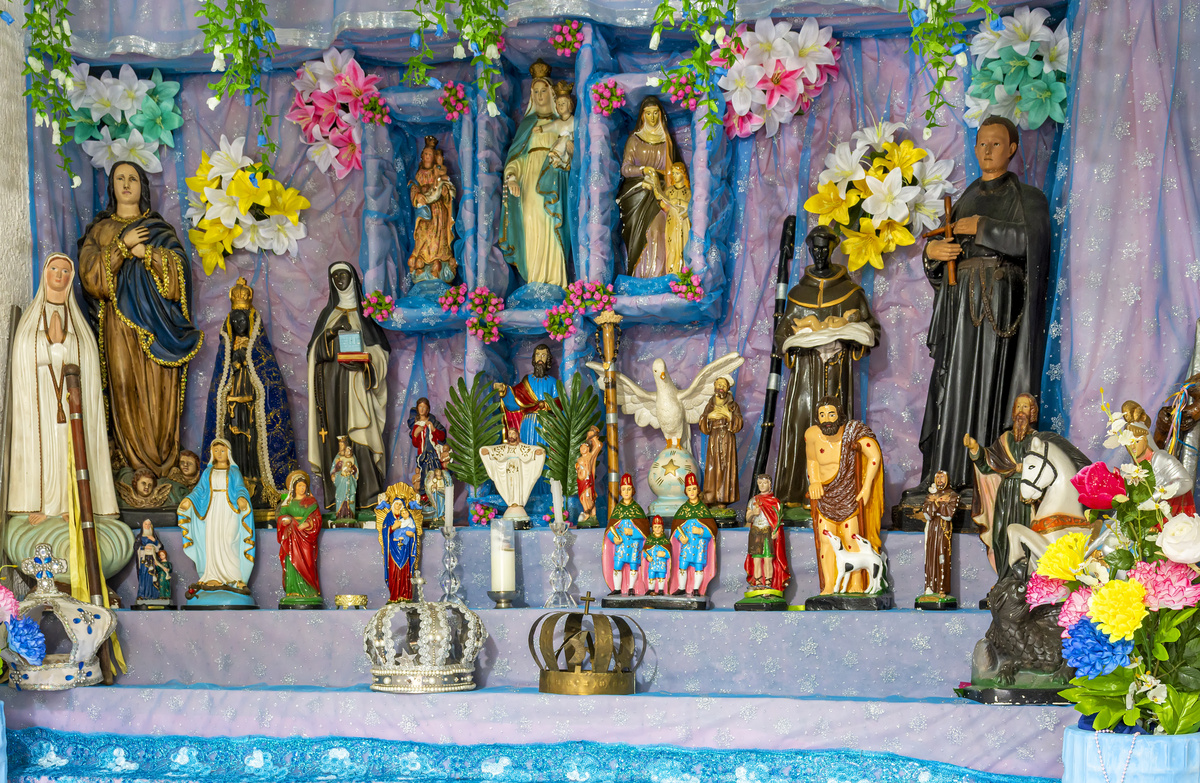
Having initiation or not, it is important to learn about the entities. To know if it makes sense to join Candomblé and understand what the orixás can help us with, knowledge of the stories and rituals of each one is part of the knowledge and concerns of these ancient souls. Below, see the story of Ewá!
Ewá in Candomblé
Ewá is a female orixá honored more in Candomblé than in Umbanda. Only a few very traditional terreiros located in Bahia perform rituals directed towards Ewá, because they are more complex and the younger generations do not know much about her. The knowledge acquired about Ewá came from the cult of Ifá and its treatises.
This and the fact that Oxum is another water orixá induces confusion between her and Ewá. This also happens with Iansã, due to the similar colors, utensils and chants - sometimes the three are even seen as one.
Thus, the terreiros in Bahia that worship Ewá are the Gantois, the House of Oxumaré, the house Obé Ogum Ebé Axé Ecô and the Ilê Axé Opô Afonjá.
Its origin
Ewá's connection to water comes from her abode and because her main source of strength is the river of the same name located in Nigeria, in the state of Ogum. In addition, some controversial variations in mythology claim that her cult was absorbed into the Yoruba pantheon, having started with the Mahi people.
Ewá cheated death
Ewá is described as a very brave woman who cheated death several times. One such occasion was the day she carried clothes in a large trough called an igbá to the edge of a river. While washing them, she noticed a man running desperately towards her. Ewá felt compelled to help him, hiding him inside the igbá.
When Ikú (death) approached her, asking where the man was, Ewá calmly replied that she had seen him coming down the river. Ikú passed the boy by, who introduced himself as Ifá and offered to marry her. Ewá did not accept the request, but it was from Ifá that she learned about clairvoyance.
Ewá and Xangô
Since Xangô is a great flirt and Ewá has a distinctive beauty, he was one of many who tried to win her over, without success. One day, Xangô was dancing on one of Ewá's territories and she made fun of him. Then Xangô did not give in and said he would do whatever and wherever he wished.
Ewá went away from there, taking with her the mist that covered the place. This made him realize that the place was a cemetery and he became sad. Xangô ended up leaving, since death is the only thing he is afraid of. Besides, the fact that he likes the peace of cemeteries is something that makes Ewá associated with Yansã.
Ewá and her brother Oxumaré
According to mythology, Nanã wanted Ewá to marry, because she thought her daughter was too lonely. But Ewá preferred to be alone and focus on protecting all that is pure and true. So Ewá asked Oxumaré for help, and he took her to the end of the rainbow, where no one has ever gone before. Thus Ewá became responsible for the white band of the rainbow, and it is also from there that Ewá brings forth thenight.
Because she likes to dance alongside Oxumaré and because both are responsible for the rainbow, some see her as his wife or female counterpart. The general consensus is that they are brothers who share attributes and symbologies - among them the serpent. But the one Ewá carries with her is smaller in size.
Protectress of virgins and all that is untouched
Because she has never married, Ewá is the protector of virgin women and of things that have never been exploited. This also makes her the ruler of pristine forests, rivers or lakes, places where you cannot swim, animals that camouflage themselves, and humanity as a whole.
Saint Lucia in syncretism
Ewá has practically no cult within Umbanda. However, her closest catholic equivalent is Santa Luzia - the patron saint of those with vision problems and of ophthalmologists. They visualize all the paths of the soul and are also connected by the vision itself.
According to the story, Saint Lucia of Syracuse was a young maiden whose mother had been ill for quite some time. Seeking a cure for her mother's bleeding, Lucia accompanied her to the tomb of Saint Agatha. There, Saint Lucia had a vision in which Saint Agatha said that she herself could work the miracle. After that, she affirmed to her mother that she was cured.
After the miracle, Lucia revealed her personal vow of consecration to Jesus Christ as a virgin. Having her decision respected, Saint Lucia was able to donate her dowry and other material goods to the poor and focus on the spiritual side. She was denounced to the emperor by a pagan suitor, having her eyes gouged out and her head cut off.
Saint Lucia was martyred at the age of 21, for not giving up her purity and faith. In this way, even though she lost her eyes, Saint Lucia sees the best paths, the ones that go beyond the physical world. Ewá is also a virgin and uses her intuition to see what is going to happen, because she looks under the mist that divides the worlds.
The qualities of Ewa
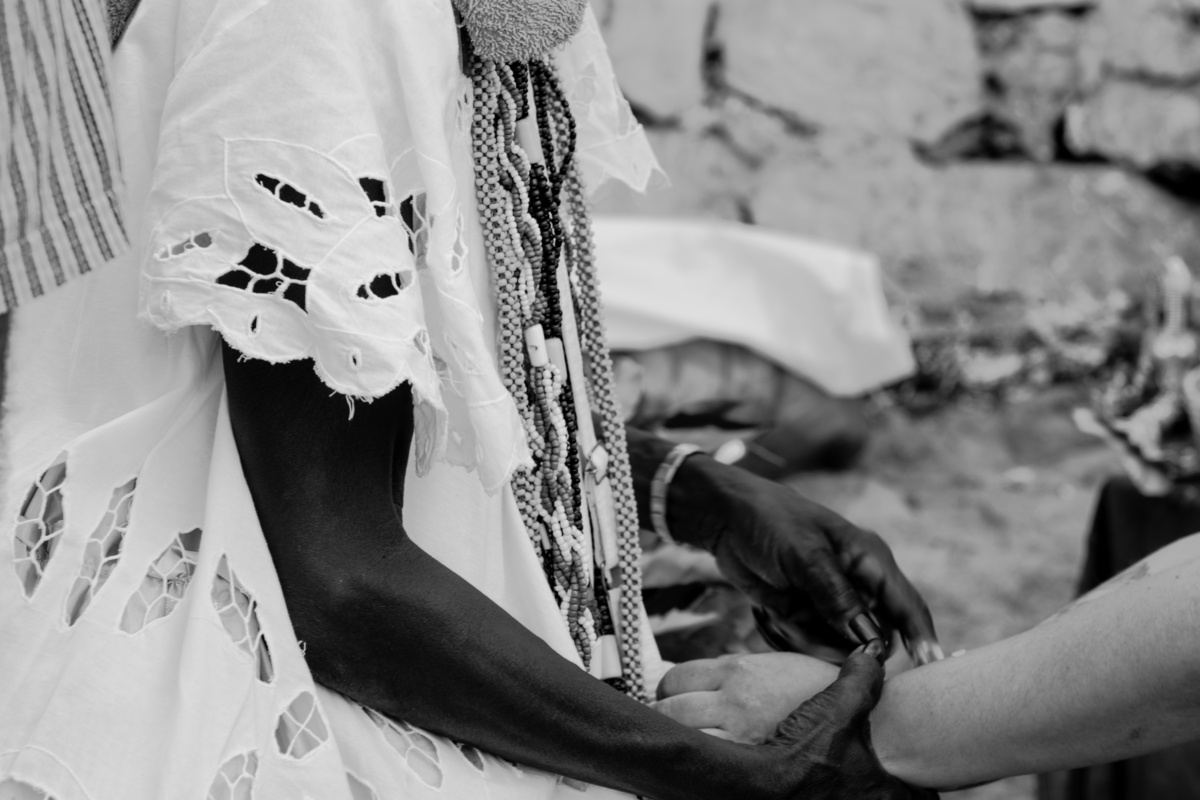
Like all other orishas, Ewá has many facets linked to her own history, her symbolism and her abilities. These facets, called qualities, are usually associated with orishas and specific situations. Let's look at the qualities of Ewá below!
Ewá Owo
The orixá Ewá goes by the name Ewá Owó, when she is associated with all that is hidden and mysterious. She is the orixá of the game of conch and her odu is Obeogundá. She also wears clothes made of pink fabric and accessories with conch, appearing alongside Iansã, Oxóssi and Ossaim.
Ewá Bamiô
According to mythology, Bamiô is the side of Ewá linked to colors, stones and precious metals. Therefore, the orixá usually wears necklaces with beads of various colors and is directly linked to Ossaim.
Ewá Fagemy
Ewá Fagemi is the facet of this orixá before enchanted and crystalline rivers and lakes, making the rainbow visible near waterfalls. She wears clothes of transparent fabric and necklaces of colored crystal. She is also connected to Oxum, Oxumaré, Ayrá and Oxalá.
Ewá Gyran
According to her attributes, Ewá Gyran is the quality of Ewá that rules the rays of the sun, the double rainbow and the general outline of the rainbow. She wears white and guides adorned with crystals and is related to Oxumarê, Oxum, Omolu/Obaluaiê and Oxalá.
Ewá Gebeuyin
Gebeuyin is the main quality of the orixá Ewá. She is Ewá in her most primordial state, governing winds and mists. In addition, she is responsible for the concealment and transformation of things.
In her physical attributes, she wears red and yellow clothing and red guides streaked with yellow. She is seen with Oxumarê, Omolu, Iansã, Oxum and Nanã.
Ewá Salamin
For the orixá Ewá, Salamin is her young, warrior and hunter side. This is the quality of Ewá linked to the virgin forests, as well as the moon and its phases. In addition, her clothes are reminiscent of hunting and she wears silver ornaments, being associated with Oxóssi and Yemanjá.
Characteristics of the sons and daughters of Ewa
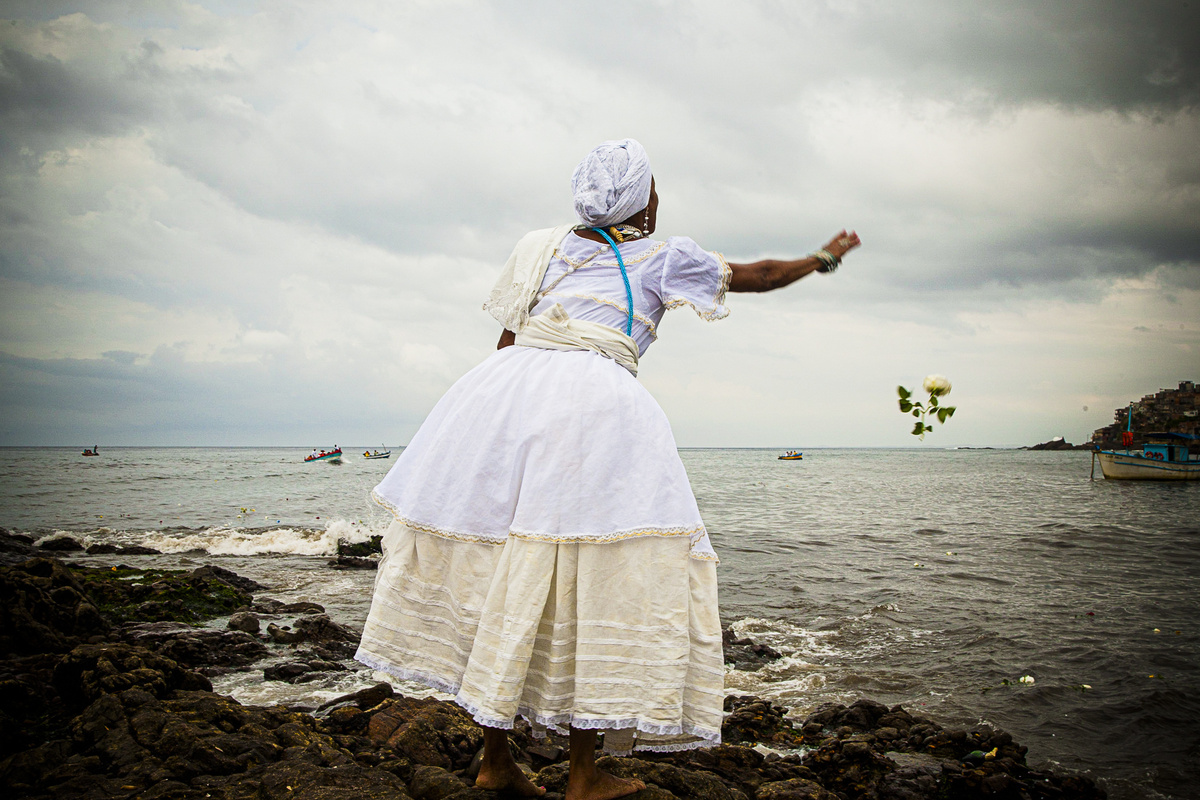
Ewá is an orixá that usually rises only on female heads in Candomblé temples, so she traditionally has only female or female-inclined sons of saint. Therefore, here are some characteristics of Ewá's daughters. Check them out!
Influential
The daughters of Ewa are usually very influential people, and they allow themselves to be adapted and molded by others so that they can better fit into an environment or situation. Therefore, they can appear as talkative and cheerful in less sophisticated places or as quiet and restrained women in high society.
Attachment to riches
According to this orixá, the daughters of Ewá are very fond of flattery and compliments. They are attached to the material world and to beauty, so they wear beautiful clothes and try to show off other signs of wealth. Therefore, it is not unusual for them to try to follow fashion trends.
Temperament with dualities
Because of their moldable nature, Ewa's daughters often have very opposite sides to their personalities, so they can appear to be much older than they really are. They also tend to sound nice one moment and arrogant the next.
Exotic Beauty
Like Ewá, a very sensual woman, her daughters are charming and inherit her exotic beauty. Like the orixá, they tend to enjoy solitude and may develop divinatory abilities. Also, with their gaze set on what is deep or inside, they may have difficulty concentrating on external stimuli.
To relate to Ewá

If we want to connect with Ewá and please her, we need to know her tastes and the right way to make a request or an offering. Therefore, in the topics below, we have listed some of the most relevant items. Check them out!
Day of the year of Ewá
Saint Lucia or Lucia of Syracuse died in martyrdom on December 13, 304. Because of syncretism, this is the main day of the year when Ewá is celebrated in the terreiros. On this day, offerings and petitions to Ewá are intensified.
Day of the week for Ewá
The days of the week are always among the domains of the orixás. Therefore, each orixá has its own, and with Ewá, this is no different. The day of the week where Ewá's presence and power is strongest is Tuesday.
Salutation to Ewá
During the rituals of Umbanda and Candomblé, the orixás are greeted in a specific way, as a show of respect in the form of a greeting. Therefore, the greeting to Ewá is "Ri Ró Ewá!" In Yoruba, this term means "sweet and mild Ewá.
Ewá Symbol
There are several items that represent the orisha Ewá in a symbolic way, starting with the snakes (mainly the colorful and poisonous ones) and the snakes wrapped around themselves. Another symbol of Ewá is the igbá àdó kalabá, which is a gourd with strips of raffia. The harpoon represents her warrior side, as well as the copper sword and the lyre.
Ewá Colors
Ewá is an orixá symbolizing purity, femininity and sensuality. For this reason, her daughters and mediums wear clothes and guides in colors such as yellow, pink, coral and bright red, which represent her. In addition, Ewá is also very fond of red flowers in the offerings addressed to her.
Element of Ewá
As the main source of power of the orixá Ewá is a river, water is one of the elements she rules, so much so that Ewá is the one who knows how to change water from liquid to gas, create clouds and make it rain. She is also the mist mistress of fog and the rainbow, together with Oxumaré, and she is responsible for the horizon line.
Prayer to Ewá
Those who owe most obligations to Ewá are her saint daughters, just as with any orixá. But that doesn't mean that other people can't turn to Ewá if they feel she can help them. One way to do this is through prayer. The best prayer is the one made in our own words. But if you wish, you can say the following:
"Mistress of the pink sky, mistress of the enigmatic afternoons; mistress of the charged clouds, mat of the rainbow. Mistress of the possibilities of the advantages and the paths of enchantment and beauty, of joy and happiness.
Mistress of mists dispel the clouds from my paths; O mighty princess! Summon the forces of the winds in my favor, may the rain cover me with prosperity, may your crown cover my fate; O princess-mother of the occult!
May I be your lost and blessed son and in your graces; may the mist that exists in my steps today be clear tomorrow.May it be so.Rirô Ewá!"
Offering to Ewá
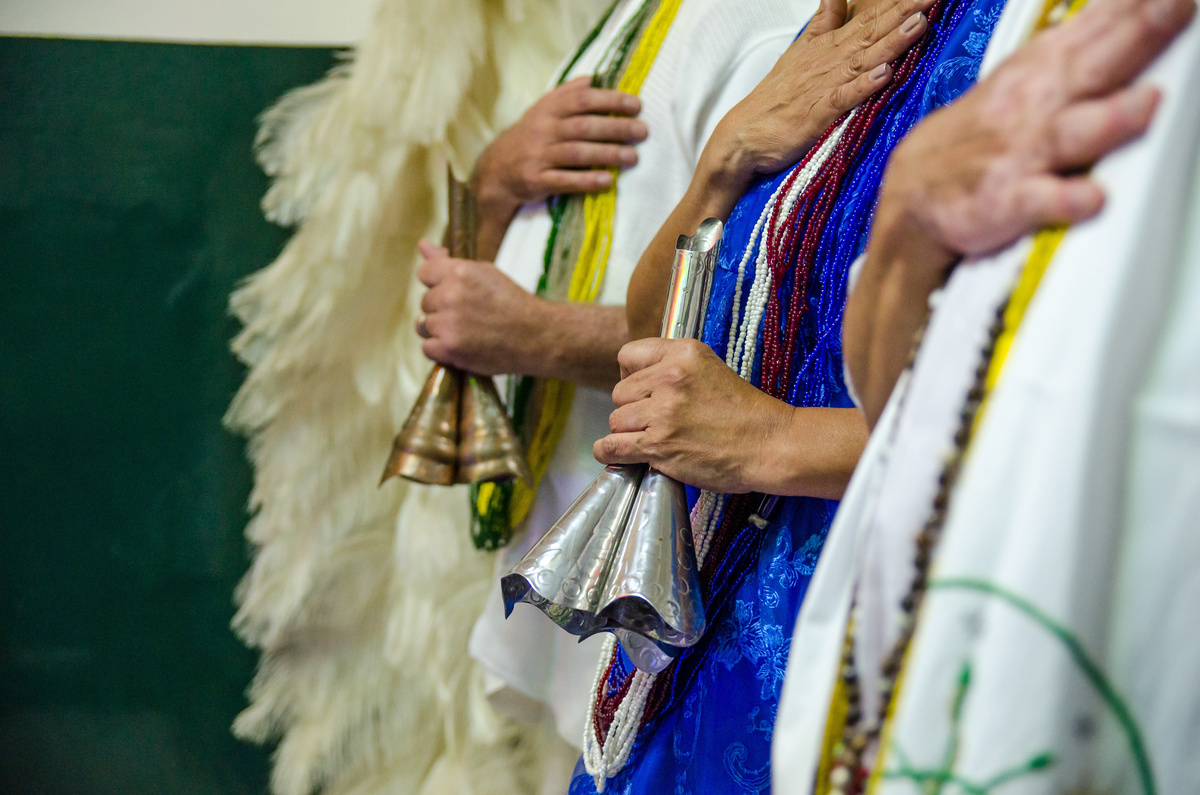
When making an offering to Ewá, remember never to use chicken in the preparation. Ewá does not like chicken and has made it her forbidden thing, so remember not to put meat or other parts of chicken in the adimu to Ewá.
According to the legend, one day after washing her clothes in the river, Ewá hung them out to dry. A chicken came up to her and scratched at them, which made Ewá very angry because she had to wash them all again. Ewá cursed the chicken, saying that neither she nor her children would eat its flesh.Ewá!
Adimu to Ewa: ingredients
Add small amounts of beans, black beans, chicken corn, sweet potatoes, dried shrimp, plantains and cooked coconut. Ewá also likes dende oil and the farofa made from it. You will also need a white candle.
Adimu to Ewa: how to do
Cook the ingredients separately. Then sauté the beans and cook the potato and coconut in cubes. If you can, fry the banana in dende and serve chopped. In a bowl, mix everything together and light the candle. Then greet Ewá in the appropriate way and present your offering. She prefers to receive offerings on the banks of rivers and lakes.
What does Ewá have to tell us?
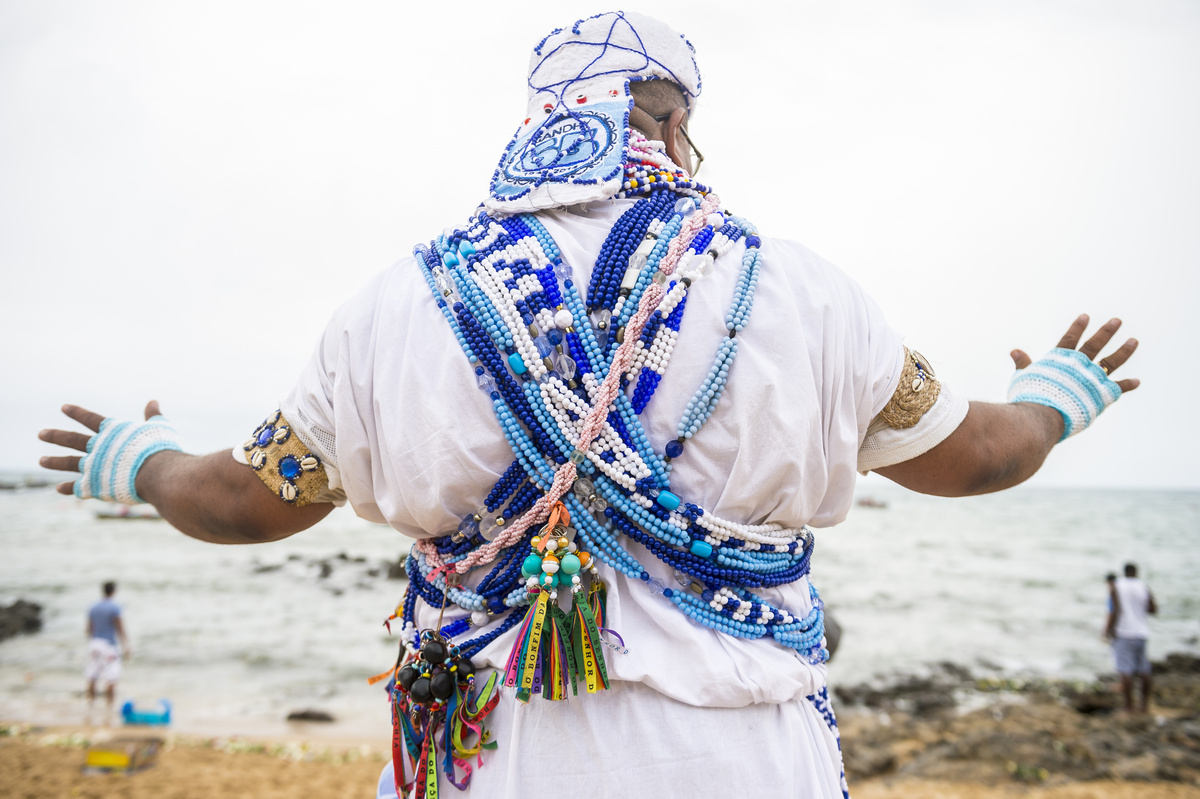
Taking into account Ewá's history and abilities, she alerts us to the importance of using intuition, which dissipates the mists that cause illusions and allows us to see things for what they really are.
Therefore, she asks us to be determined and firm in our decisions and helps us understand which areas of life need urgent change - where we need to be flexible and learn to adapt.
As an orixá of great strength in the feminine polarity, Ewá highlights the greatness of the transformations that are directed towards who we are. That is, when we change to resolve internal issues and not because of pressures imposed by the environment and other people, these actions lead us to authenticity.
Women, especially, should not forget that the exercise and knowledge of their potentialities should not be molded having the desires and expectations of men as a parameter. This is a burden they need not and should not carry.
Therefore, a good action is to make a list with three possibilities to develop. Next, list three actions that direct towards this goal and then ask Ewá for guidance.
In this article you have been able to see everything about the fascinating orixá Ewá. We hope we have helped you get to know her better. So, if you feel the call, don't hesitate to look for a Candomblé temple. We wish you lots of luck, wisdom and axé!

